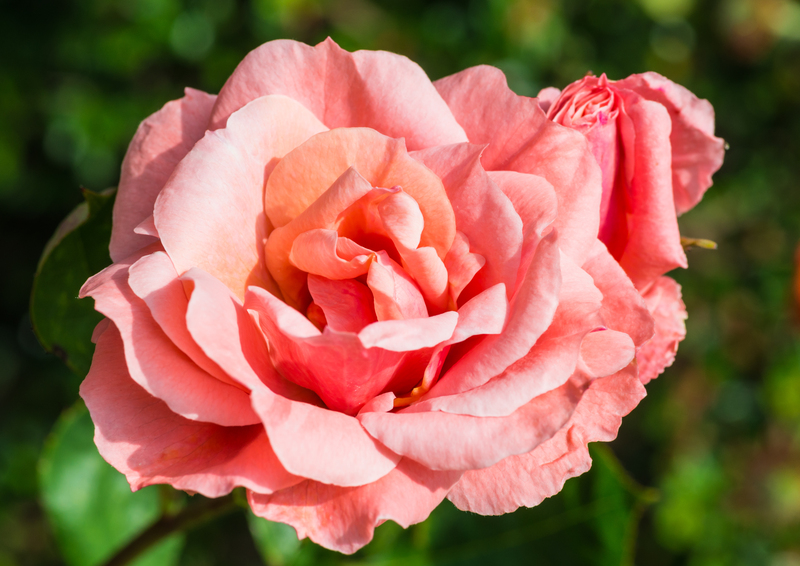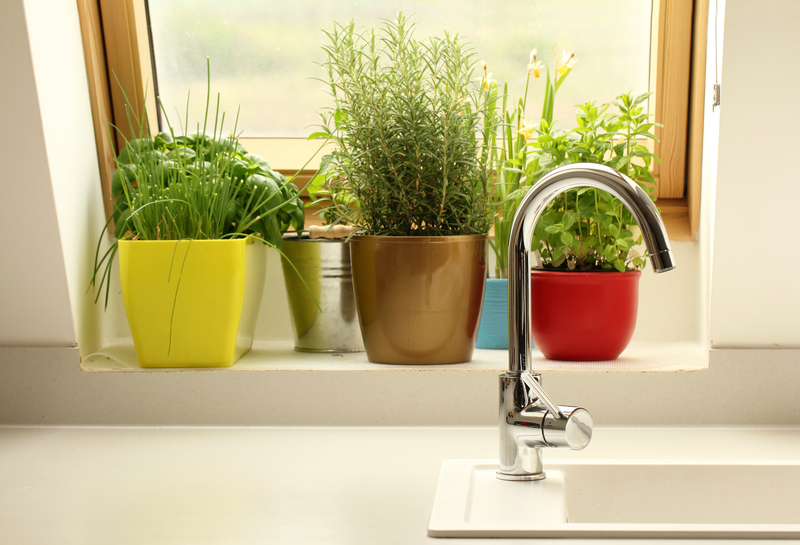Transforming Your Backyard into a Child's Dream Garden
Posted on 15/09/2025
Transforming Your Backyard into a Child's Dream Garden: A Complete Guide
Is your backyard an underused space full of potential? Are your children longing for a magical area to play, learn, and grow? Transforming your backyard into a child's dream garden not only creates lasting memories but also encourages outdoor play and development. From planning to planting, this comprehensive guide will show you how to design a vibrant, safe, and imaginative environment perfect for kids of all ages.

Why Create a Dream Garden for Children?
Children thrive in nature. A thoughtfully designed garden can offer numerous benefits:
- Physical activity and exercise through play
- Learning opportunities about plants, seasons, and insects
- Space for creativity and imagination to bloom
- Bonding time with family and friends
- A safe, engaging haven just steps from home
Planning Your Child's Dream Garden
1. Assess Your Space and Needs
Begin by considering:
- The size and shape of your backyard
- Sunlight and shade throughout the day
- Soil condition
- Existing trees, plants, or features to incorporate or remove
- Your child's age, interests, and abilities
2. Set a Budget and Timeline
Dream gardens can fit any budget. Decide how much you can spend upfront, and spread projects over several months or years if needed. Involving your children in the process fosters excitement and teaches planning skills!
Essential Features for a Kid-Friendly Backyard Garden
1. Safe and Inviting Paths
Use soft, non-slip materials for walkways: think mulch, pea gravel, stepping stones, or grass. Curved paths invite exploration and separate play zones from planting beds.
2. Dedicated Play Areas
Children need room to run, create, and imagine. Consider:
- Swings or slides for active play
- Sandpits for digging and building
- Treehouses or small forts to spark imaginative adventures
- Open lawn spaces for ball games and picnics
3. Edible Garden Beds
Growing food is a magical experience for kids. Designate raised beds or containers for easy access. Incorporate:
- Cherry tomatoes and strawberries for sweet snacking
- Colorful carrots, snap peas, and lettuce for curious hands
- Herb spirals or sensory gardens with mint, lavender, and basil
4. Water and Sensory Elements
Children love to engage all their senses. Add:
- Small kid-safe fountains or bubbling water features
- Mud kitchens for messy, creative play
- Wind chimes, textured plants, and smooth stones for tactile and auditory stimulation
5. Secret Spaces and Hideouts
Transform corners with:
- Living willow teepees or arbors
- Hedge tunnels or oversized shrubs
- Cozy benches surrounded by fragrant flowers
Choosing the Best Plants for a Children's Garden
1. Safety First: Non-Toxic and Kid-Friendly Choices
Always select non-poisonous plants and avoid thorny or spiky varieties. Some popular, safe picks:
- Sunflowers -- Tall, cheerful, and easy to grow
- Sweet peas -- Fragrant with delicate blooms
- Calendula -- Bright petals with healing properties
- Pansies and nasturtiums -- Edible and vibrant
- Lamb's ear -- Velvety to the touch
- Mint, basil, thyme -- Aromatic and useful in snacks
2. Encourage Wildlife and Pollinators
Choose native flowers and shrubs to attract butterflies, bees, and birds. Let children watch caterpillars transform into butterflies or listen to the chirp of finches and robins.
3. Mix Up Heights, Textures, and Colors
Plant layers of interest with groundcovers, mid-sized perennials, and tall sunflowers or hollyhocks. Look for plants with contrasting leaves, fuzzy textures, and varieties that rustle or rattle in the breeze.
Exciting DIY Projects for a Magical Kid's Garden
1. Pallet Playhouses and Upcycled Structures
Recycled wood pallets make quick, eco-friendly bases for forts, play kitchens, or platforms. Paint in bright, weather-resistant colors for extra cheer.
2. Personalized Stepping Stones
Invite kids to decorate concrete or wooden stones with mosaics, handprints, or painted designs. Line paths or fill garden gaps for a custom look.
3. Wildlife Hotels
Build bug hotels, birdhouses, or toad shelters from natural materials. These simple projects foster respect for small creatures and teach eco-awareness.
4. Fairy Gardens and Mini Worlds
Design small container gardens or miniature landscapes with fairy figurines, tiny houses, and pebble rivers. This is perfect for imaginative play and story-telling.
5. Pumpkin Teepees or Beanpole Forts
In late spring, plant beans, peas, or gourds at the base of a teepee-shaped bamboo frame. As vines climb, they create a lush, living fort for summertime hideouts.
Safety Tips for a Family-Friendly Garden
- Check plant safety -- Avoid toxic species
- Supervise water play -- Fountains and ponds should be shallow and covered for young children
- Use organic, child-friendly gardening methods -- Skip harsh pesticides and fertilizers
- Fence off danger zones -- Tool sheds and compost bins should be secured
- Install soft landings -- Use mulch or sand beneath playsets
- Involve kids in tool use only with supervision!
Year-Round Fun: Seasonal Activities for Your Dream Garden
Spring
- Plant seeds and watch them sprout
- Build raised beds or clear out old plant debris
- Spot nesting birds and emerging insects
Summer
- Host garden tea parties or picnics
- Harvest strawberries, peas, and herbs
- Water play and mud kitchen fun
Fall
- Leaf pile jumping and treasure hunts
- Collect seeds and press flowers
- Decorate with pumpkins and scarecrows
Winter
- Hang bird feeders and watch winter visitors
- Wrap up warm to explore frosty mornings
- Dream and plan for spring's new projects!
Involving Children in Creating Their Dream Garden
Encourage Ownership and Creativity
Let children pick their own seeds or plants. Invite them to name garden beds, paint signs, design layouts, and take part in digging and maintenance. Ownership leads to pride and enthusiasm about spending time outdoors.
Make it a Family Project
Gardening is a chance to bond, work side-by-side, and share victories. Assign age-appropriate tasks and celebrate milestones with a picnic or garden party.
Maintaining Your Child's Garden Paradise
Keep Tasks Simple and Fun
Frequent, bite-sized gardening sessions are better than long, tiring chores. Turn weeding or watering into challenges or games. Reward effort with a new plant or time spent making a fairy garden.
Cycle Through Fresh Activities
Change up planting beds, swap out toys, or rearrange play areas as children grow. Continually add new elements to keep the space stimulating and relevant.
Transform Your Backyard into a Lasting Legacy
A child's dream garden is more than toys or plants; it's a place where laughter echoes, discoveries unfold, and bonds deepen. Transforming your backyard into a magical and nurturing space will inspire your family for years to come. Start small, dream big, and enjoy every joyful (and muddy) moment along the way.

Frequently Asked Questions: Transforming Your Backyard into a Child's Dream Garden
How do I make my backyard child-friendly and safe?
Use non-toxic plants, soft paths, and mulch under swings or slides. Fence any hazards and supervise water play. Pick sturdy furnishings and skip chemicals.
What are the easiest plants for kids to grow?
Try sunflowers, radishes, peas, cherry tomatoes, nasturtiums, and marigolds. These sprout quickly and are rewarding for beginners.
How can I encourage wildlife?
Plant native flowers, install bird feeders, and build bug hotels. Avoid pesticides and include a shallow water source for butterflies and bees.
Conclusion: Unleash Imagination and Adventure Right at Home
Transforming your backyard into a child's dream garden is a labor of love that pays off for generations. By combining nature, play, learning, and creativity, you provide a treasured sanctuary where children--and the young at heart--can thrive every day.
Ready to get started? Let your backyard bloom into a world of possibility and watch your children's imaginations soar!

